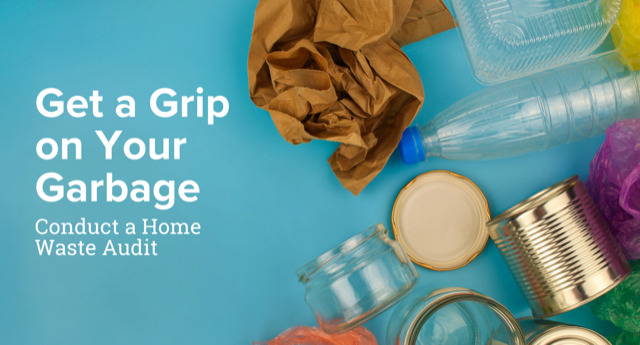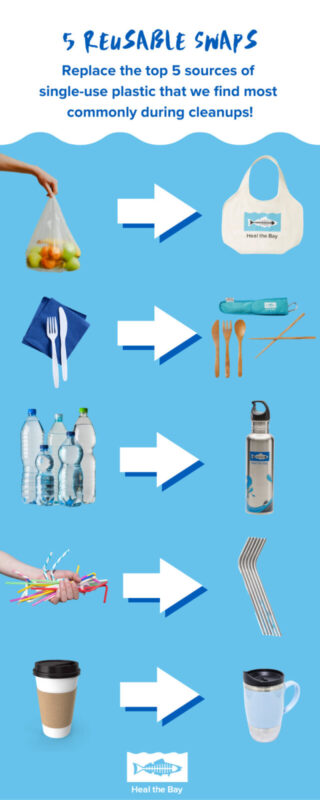Get a Grip on Your Garbage With a Home Waste Audit

The consumption of single-use plastic has surged exponentially during the pandemic. Safety concerns make it more challenging to use a reusable cup at our local coffee shop and many stores have policies that complicate bringing your own bag. With everything else in the world feeling a bit defeating, this is the perfect time to double down on what we can control.
One easy and simple way to make your lifestyle more sustainable is by conducting a quick waste audit. Waste audits are the perfect way to evaluate what we use in our day-to-day lives, see where we can replace single-use items with reusables, and get into the habit of buying fewer things made from non-degradable or non-recyclable materials.
So what exactly is a waste audit, and how do we get started?
A waste audit is an analysis of the trash we produce in our own homes to take note of what is actually being disposed of. This gives us a better understanding of what we’re adding to the waste stream and allows us to get a snapshot of what we use, throw away, and recycle. Waste audits can also help us identify areas we want to improve in terms of consumption and use, and possibly inspire cost saving or upcycling ideas.
Home waste adults are helpful tools that can bring more environmental awareness and change into our lives.
Here’s our 5 step guide to a DIY waste audit:
Audit Prep
- Set a time: Ask yourself, “how long do I want to do a trash audit?” Remember you can do a trash audit in one day or over the course of a few days. We recommend a 4-5 day window and choosing a date(s) you won’t have any special events to avoid skewing your audit data. Once you pick your start and end dates, set a reminder on your phone or mark your calendar to start your audit.
- Grab a bin: Designate one trash bin in your home to collect waste items you use for your analysis. Make sure to separate out and rinse any containers that have any organic waste materials. Organic waste, like food scraps, won’t be counted in your audit.
- Collect trash: let your trash pile up until your designated time to evaluate.
Evaluation
- Grab supplies: You’ll need your now very full trash bin, something to take notes with, a tarp, and 15-30 mins of time.
- Sort your trash: lay out your tarp and place all your trash on the tarp into categories. Examples include: “paper products,” “recyclables,” “wrappers,” “miscellaneous,” etc. Tally your waste to document your results. If you want to take your waste analysis a step further use this form to help you categorize your home waste and use this guide or video to help you categorize products and attribute it to the brands that produced it.
When looking through your trash, try to answer these questions to understand the type of waste you’re producing:
- Can you note how many of the items you’ve thrown away that can be recycled? Not all plastics are recyclable, even if it has a chasing arrows icon. Less than 10% of plastics are actually recyclable, and most will never be recycled. Watch this video to learn what each of the numbers between the chasing arrows icon on plastic containers actually mean.
- What is your most commonly thrown out item? Is there anything that surprises you about what you collected? (Maybe you have an excess of packaging material, or a certain type of product. Perhaps a particular brand seems to use excessive packaging.)
- What items are necessary and what could be replaced with a reusable or more environmentally-friendly product?
- Besides recycling, what options do you have for disposal? (Can anything in your bin be composted, like cardboard?)
- How did you do? What did you discover? Are there any areas of improvements? What are some other alternatives?
Awareness is the first step. Action is power. Once we know more about our own personal consumption habits, we can make the change that best suits our needs and the environment.
If you want to take it a step further after your audit and challenge yourself, try refusing the top five sources of single-use plastic that we find most commonly on our beaches, parks, and streets.



